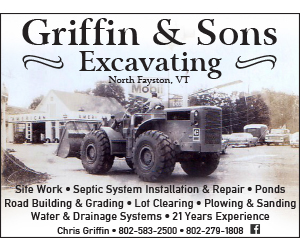By Hannah Head, Community News Service
For years, dams have been built to control river flow, power industry and prevent floods. Ecologists argue they just move the damage further downstream. Vermont ecologists support a greener flood-prevention strategy: removing derelict dams.
In light of the recent increase in severe flooding across Vermont, environmental scientists say that restoring rivers to their natural flow can decrease Vermont’s flood risk. But dam removal is expensive, and as flood disasters keep occurring, it becomes increasingly difficult for the state to move forward with large restoration projects.
Flooding in summer 2023 caused damage totaling more than $600 million, according to a state estimate. Another round of flooding in summer 2024 caused fresh damages estimated at more than $32 million.
Ecologists argue that river restoration work can no longer be put off.
“Ultimately the restoration work is public safety work. We’re contributing to public safety, but because it’s not as immediate, it gets pushed down the road,” said Karina Dailey, a restoration ecologist for the Vermont Natural Resources Council.
Dailey works on river restoration programs throughout Vermont as a means of flood prevention. She manages the council’s dam removal program, which focuses on removing dams and concrete barriers in rivers so that natural stream flow and function can be restored.
Vermont has 1,085 dams around the state, according to an inventory kept by the Department of Environmental Conservation. Of these, 146 are listed as significantly hazardous due to their poor condition, and 75 are listed under the more dangerous category of highly hazardous.
Infrastructure like dams, berms and levees can be effective at controlling river flow and diverting water during heavy rain. Many dams in Vermont were also built to generate power for mills and other small industries. But the structures also restrict river flow, which can lead to increased flooding down the line.
“I remove barriers from rivers,” Dailey said. “When you take out a barrier, you’re also lowering the elevation of the river because the river’s built up behind that dam where there’s been years of accumulated sediment. And by lowering that river elevation, you’re also giving the river access to the flood plain that historically may have been (a reservoir) behind the dam.”
Rebecca Diehl, a Friends of the Mad River board member and UVM research faculty member, noted that while there are some dams that are meant for flood water storage, many in Vermont do not provide such a function.
“Removal of failing dams or those that have limited storage capacity, in particular, can increase public safety and potentially reduce the worst flooding impacts downstream, although detailed hydraulic studies are often needed to fully understand the flood resilience benefits. Removal of such structures can also provide riverside communities with numerous co-benefits such as improved habitat connectivity and enhanced recreation opportunities,” she said.
In heavy rain conditions, flood plains are critical in preventing downstream flooding. They temporarily store excess water and allow floodwaters to spread out. But people have a history of building on flood plains due to their rich soils and lack of obstructing vegetation.
“When as a society we built our infrastructure in the path of the river, it increased our collective risk for the floods that we’re experiencing today,” said Kassia Randzio, co-director of the Vermont River Conservancy.
The Montpelier nonprofit runs big- and small-scale river restoration projects across Vermont. In fall 2024, the organization completed a multi-year flood plain restoration at Whetstone Brook in Brattleboro. Currently, the group is working on feasibility studies in hopes of removing four dams around Montpelier, where the 2023 flooding submerged the downtown and caused millions in damage.
“The opportunity that we have is to look at the land and think about places where we can protect flood plains, protect wetlands, protect headwater, forests,” said Randzio. “If we can allow those places to serve as the sponges that they should be … all of those things that we can do are opportunities to keep homes and businesses and communities safer downstream.”
Many river restoration projects center around the idea of giving rivers room to move, or destroying old infrastructure, such as dams and berms, so that smaller-scale rivers can resume their natural flow.
It’s about “recognizing that our natural infrastructure is our best line of defense,” Dailey said. “We really need those systems to function as natural systems to protect us.”
Still, flooding is a significant risk.
“We’re always at risk of flooding,” said Marvin Boyd, a meteorologist at the Burlington office of the National Weather Service.
Boyd attributed most of the flood risk to heavy rainfall, as well as to heavy ice or snow melt that can quickly cause rivers to rise. As temperatures warm from climate change, the atmosphere can hold more water, which can fuel more intense rain.
“The intensity of the storms that are coming in and the amount of water that is coming in with these horrific storms is just too much to handle,” said Julie Silverman, the Lake Champlain senior lakekeeper with the nonprofit Conservation Law Foundation.
As lakekeeper, Silverman’s role is a blend of environmental education and outreach. She works to monitor and advocate for the health of Lake Champlain and its tributaries.
“How do we support removal of those derelict dams, or unneeded dams, so that we can let the rivers flow?” Silverman asked. “And what we know is that a dam that’s not maintained – and a dam in general – is more dangerous to flooding than no dam at all.”













